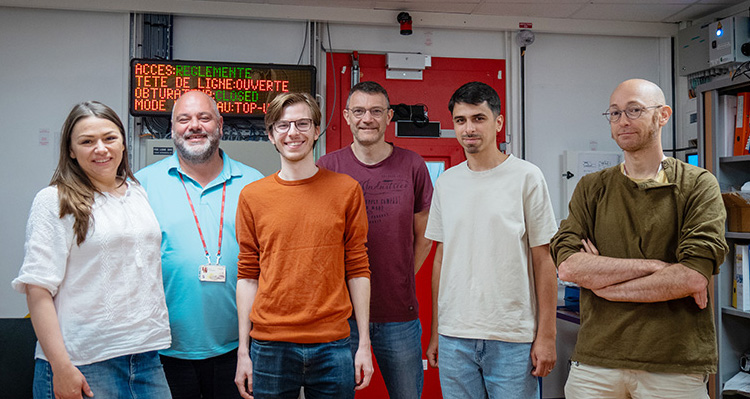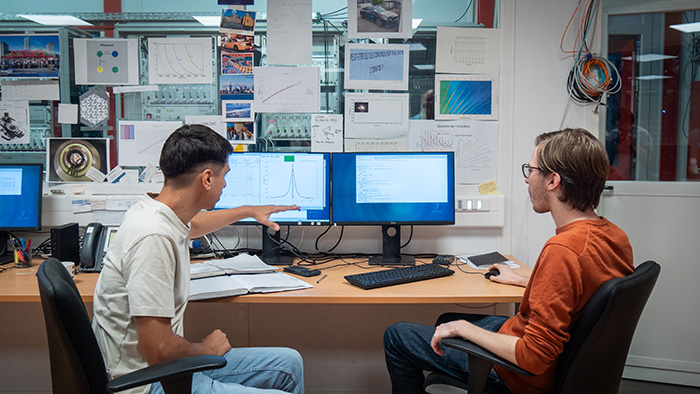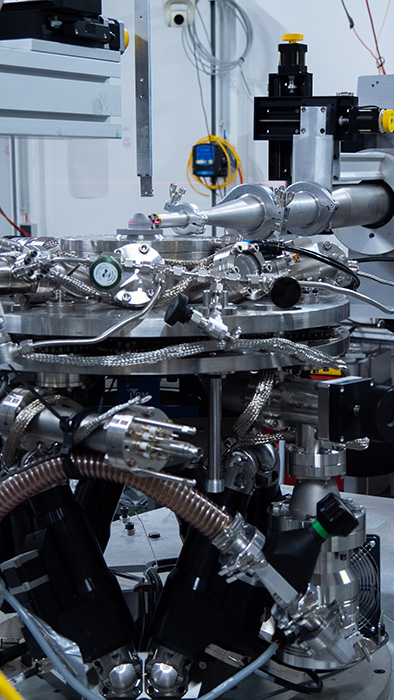Scientist from the National Institute for R&D in Microtechnologies (IMT) in Bucharest, Cosmin Romanitan has strong expertise in laboratory-based X-ray diffraction on different types of nanomaterials. He wished to complement this background with knowledge of synchrotron analysis techniques, which are not available in Romania.
"The rapid development of nanomaterials in different fields involves the use of new investigative techniques," Cosmin explains. "The intensity of synchrotron radiation and the resolution of X-ray diffraction measurements are higher than those in laboratory setups, enabling a more detailed interpretation of nanomaterials’ microstructure."
By applying to the NEPHEWS program, he expected to join an experienced international team and observe a synchrotron experiment "live," gaining firsthand insight into the experimental setup, sample preparation, data acquisition or processing.

From left to right: Alina Vlad (SixS scientist), Alessandro Coati (SixS manager), Fausto Aldegheri (2nd year Master trainee), David Babonneau (Institut PPrime, Poitiers), Cosmin Romanitan (IMT Bucharest), Andrea Resta (SixS scientist).
Mission accomplished! During his five-day stay at SOLEIL, he was introduced by the SIXS beamline team to grazing incidence X-ray diffraction and small-angle X-ray scattering (GI-XRD, GI-SAXS) and (XRD). These techniques were used to unveil the microstructure of metallic nanoparticles in terms of atomic structure, dimension, or shape. Particularly interested in operando measurements, Cosmin also had the opportunity to attend a complete operando experiment, which allowed the scientists to evaluate the structural and morphological changes in nanoparticles induced by a catalytic reaction.

Cosmin Romanitan and Fausto Aldegheri, in the SIXS workstation during data acquisition.
Last but not least, he received valuable advice from the SIXS team on the required steps to follow for a successful application for beamtime at SOLEIL.
See you soon at SOLEIL as a user, Cosmin!

In the SIXS experimental hutch, the XCAT flow reactor dedicated to operando studies during a catalytical reaction, installed at the multi environment diffractometer (MED) station.
